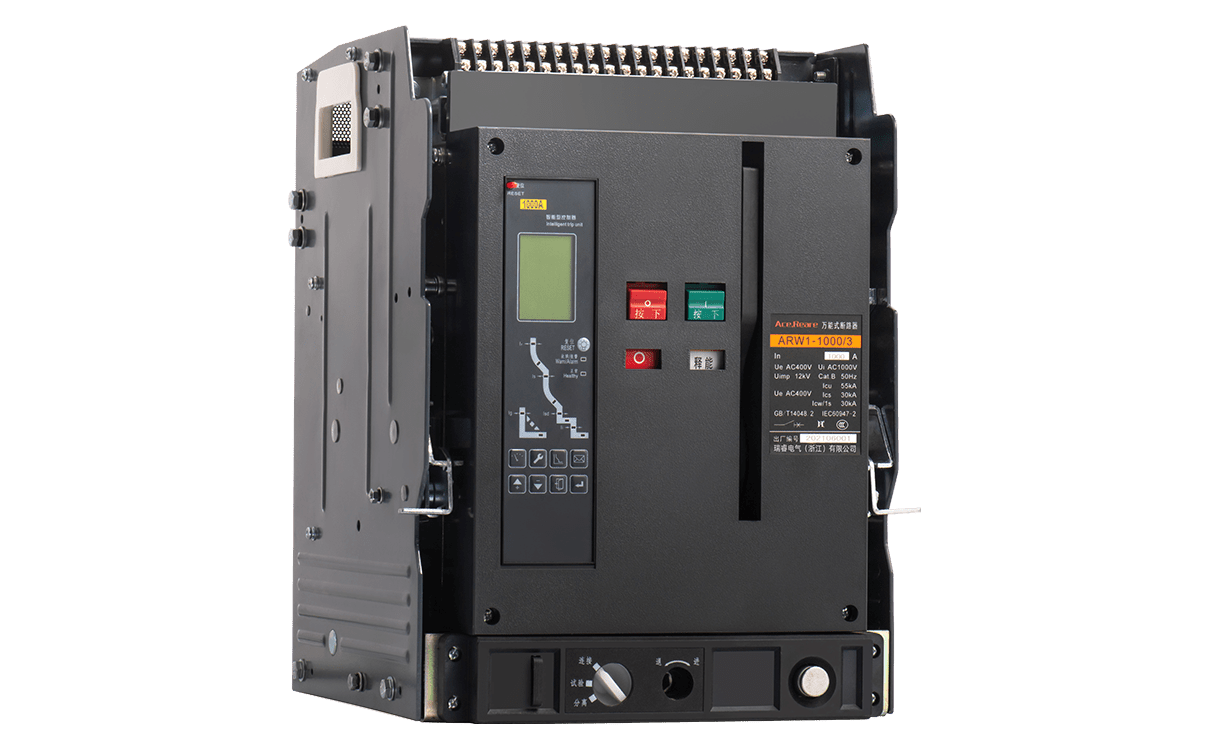
Date | 2022-09-14 13:18:57
The electronic circuit breaker manufacturers refer to the switches of electronic circuit breakers as earth leakage circuit breakers (hereinafter referred to as RCD ), which are air with special protection functions. What is detected is the residual current, i.e. the algebraic sum of the instantaneous values of the currents in the phase and neutral lines within the circuit being protected. The rectification value of the RCD, i.e. its frontal current In, is therefore sufficient to avoid the normal leakage current value, which, due to its mA value, makes the RCD sufficiently effective to block earth defects in the protected circuit and, in addition, to be used for standby protection against electric shocks.
The electronic circuit breaker is a protective appliance that detects the magnitude of the phase to earth leakage or electric shock current occurring in the protected grid and serves as a signal to announce the action trip and end the action trip task. In low voltage networks with electronic circuit breakers, the phase line leakage current of the network is usually small and does not reach the working current value of the electronic circuit breaker, so the electronic circuit breaker does not work. After the shortcomings such as leakage or personal electrocution within the protected grid, when the electronic circuit breaker detects the component current reaches its leakage or electrocution act current value, the electronic circuit breaker issues an act trip command to make the controlled main circuit switch act trip to cut off the power supply and complete the leakage or electrocution protection task. In addition to its role as a substrate for air, it can also sensitively disconnect the switch in the event of leakage in the load circuit, avoiding damage to people and the impact on electrical equipment in the event of leakage in the load circuit.

On the other hand, air switches are called air circuit breakers and are generally low-voltage, i.e. with a rated operating voltage of 1 Kv. Switchgear with various protection functions to cut off and connect the circuit at the rated voltage and rated operating current. The type of protection function and the protection method are selected by the user according to his needs. For example, short-circuit protection, over-current protection, split excitation control, undervoltage protection, etc. The first two of these are the underlying equipment used to protect the air, the last two are optional functions. Therefore, the air switch can also block the circuit.
An electronic circuit breaker switch cannot replace an air switch. Leakage switches have more protective functions than air switches, but there is always the possibility of leakage during work, which leads to tripping and frequent load blackouts, affecting the continuous, normal work of electrical equipment. For this reason, they are generally only an option for temporary electricity use on construction sites, or for socket circuits in industrial and civil buildings. The earth leakage switch can also be described as a type of air switch, with similar mechanical behaviour and extinguishing methods. However, as the earth leakage switch protects mainly the person, the general behavioural value is of the milliamp level. In addition, the behavioural detection methods are different. The earth leakage switch uses residual current protection equipment, which detects the residual current, i.e. the algebraic sum of the instantaneous values of the phase and neutral currents within the circuit being protected. Therefore, its amount of action current avoiding the normal leakage current value is sufficient to be able to fully and actively block the disadvantages of earthing and prevent direct contact with electric shock.
Air switches are simple overcurrent tripping (safety level), with only overcurrent protection and manual operation. The electronic circuit breaker manufacturer adds leakage protection to the product, and the zero line connection does not play a role in leakage protection. Because it monitors the current of the 4 lines, the positive and negative currents need to be offset and become zero. If there is a leakage, it is not zero, but a jump. A three-phase, four-wire earth leakage switch can also be connected to three phase wires for use as an air switch. It trips when the load is short-circuited or when over-current is flowing. The zero wire of a three-phase four-wire earth leakage switch must be connected in order to achieve a leakage trip. This is because the power for the decoupling coil of the earth leakage trip is taken from one of the three phase wires and the zero wire.